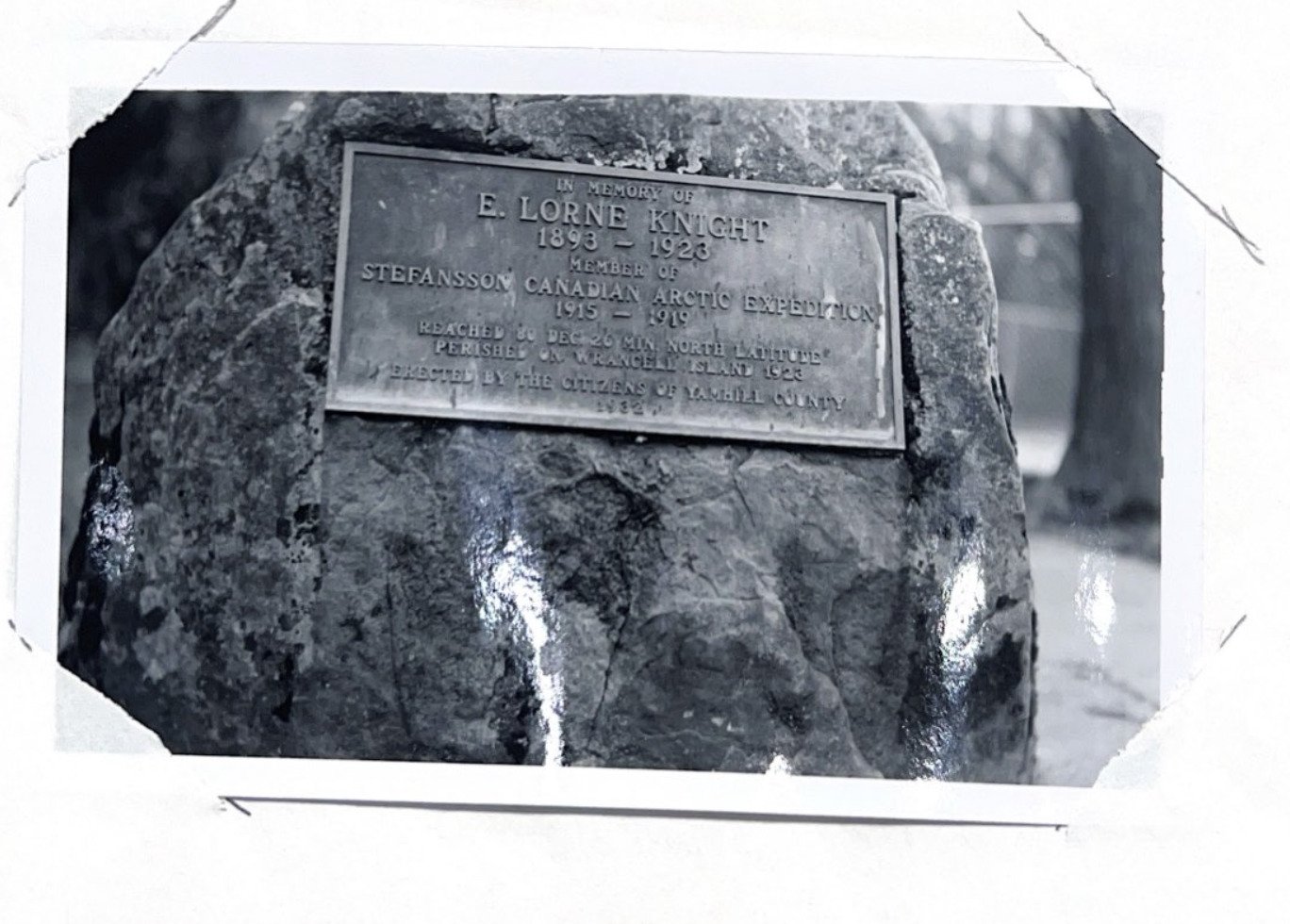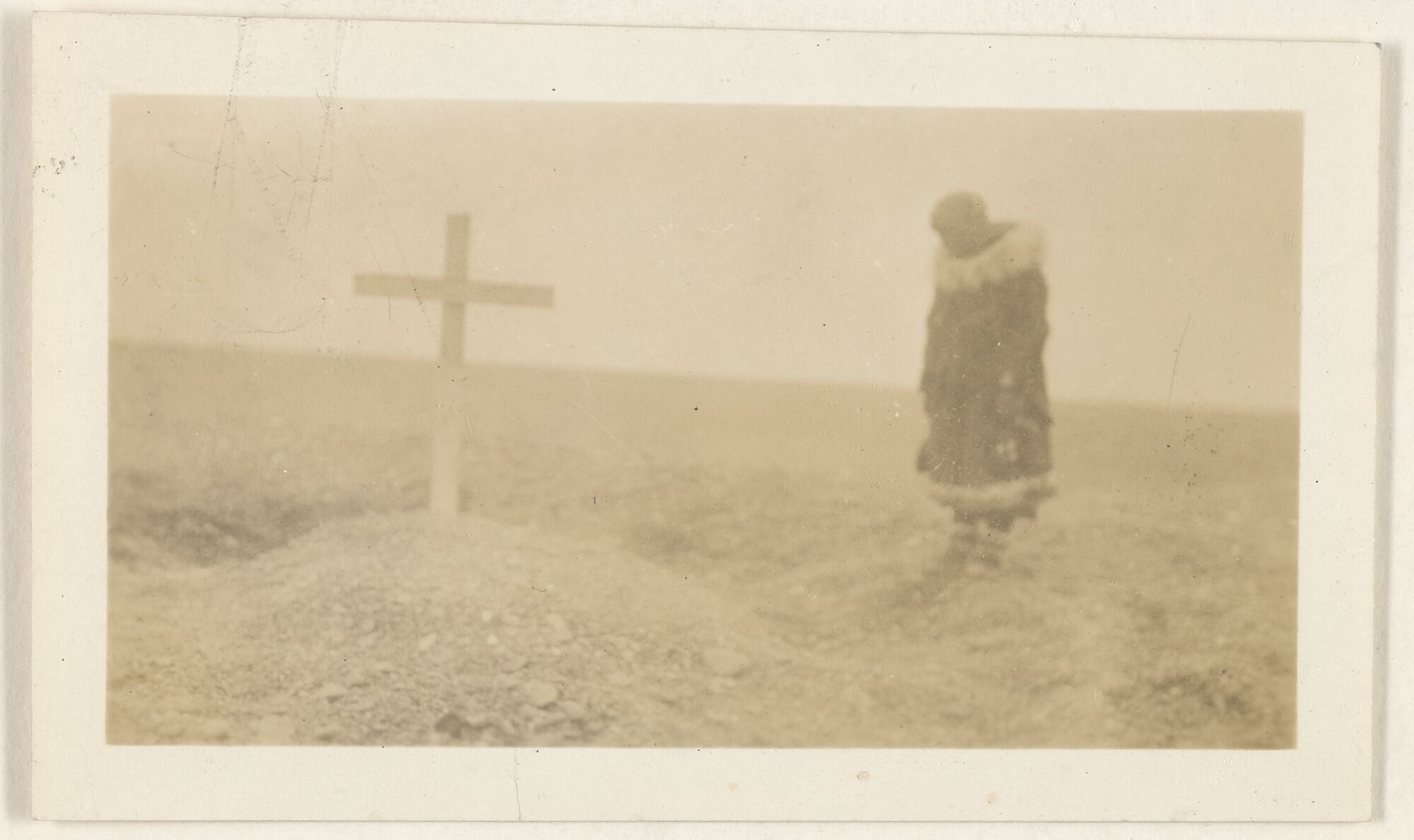After Knight's Death
After the tragic death of Lorne Knight on Wrangel Island, those who knew him went to great lengths to preserve his memory and honor the achievements of his life. Viljhalmur Stefansson, whom Knight had been on four years of arctic expeditions with previously, published the novel The Adventures of Wrangel Island in 1925 to tell the story of the men who perished and preserve their valliance and “worthy motives” into a text that could be distributed to Canada, the United States, and England. What few know, however, is that the stories Stefansson writes throughout his book were largely based upon the diary Knight kept throughout the two years of the mens’ isolation on Wrangel Island. In a way, this book carries Knight’s legacy in a way no other man who perished on the expedition was afforded. The stories we gather from the text would be lost if it weren’t for Knight and his commitment to meticulous and “frank” diary-keeping, the reason for which we still don’t understand.
The Adventures of Wrangel Island, using Knight’s hundreds of diary entries, details the entirety of the expedition from the “fatal drift” of their ship, the Karluk, to the summer of 1923 when Knight passed away. Intricate stories such as the groups’ polar bear hunts and difficulties surviving the harsh arctic winters would not have been retold with Knight’s bookkeeping. It would be a disservice to the narrative, however, if the controversies of The Adventures of Wrangel Island were not discussed. Throughout the book’s introduction, written by Lorne Knight’s father John Knight, his grief is clear even three years after his son’s passing. John Knight writes of his disdain towards Harold Noice, reporter and member of the rescue operation of 1923 which saved Ada Blackjack. John Knight writes that Noice “was so fed up on notoriety, spiced with egotism, that he lost all sense of the prosperity and fitness of things; and when he returned from Wrangel Island in 1923 with the startling news of the tragedy, he became intoxicated with his own greatness and insane over his imagined authority…ignoring the rights and feelings of others.” John Knight alleges that Noice “appropriated Lorne’s diary and sold it for his own gain,” “mutilated it and gave a coloring to his writings,” and “[desecrated] a private letter of a dead boy to his mother.”
John Knight does, however, write about his warm feelings towards Ada Blackjack for acting as his son’s caretaker during his dying months. He tells of Ada’s visit to their home in Oregon and notes his “warm feelings” towards her for doing her best to “nurse safely through his last illness.” Stefansson, however, dedicates an entire chapter of The Adventures of Wrangel Island to Noice’s allegations that Ada was responsible for Knight’s death–allegations that were first brought by Noice a year after his witnessing of Ada’s rescue from the island. In 1924, Noice published an article entitled “Spurned Eskimo Woman is Blamed For Arctic Death” accusing Ada of starving Knight after rejecting her proposal for marriage. Noice states in his article that he found Lorne’s emaciated body and Ada Blackjack was “well and fat,” despite her recorded weight after rescue being only 90 pounds–30 less than when she had left two years prior. Noice asserts that Ada refused to visit traps and lied about her inability to use a rifle while Knight died of starvation and her journal details entries of her “washing her hair and making beads” while Knight lay dying. John Knight’s response to this amidst his personal conversations with Ada addresses these allegations, calling them “cruel and unfounded.” It is true that his son’s diary itself speaks to Ada’s unsuccessful attempts to hunt for food. John Knight goes as far as to write that he “[could] not allow the stigma to be placed upon [himself] or [his] family for having entertained a person so gross and monstrous as Noice would have her appear.” He states that “Ada as a…guest in [his] own home” was “lauded and admired by…friends and family of Lorne,” and “there is nothing to justify…belief that she did not do for Lorne all that she was able to do.”
Perhaps Lorne Knight’s legacy is best summarized by a letter from Captain Hubert Wilkins of the Wilkins-Ellsworth Trans-Arctic Submarine Expedition in memoriam of his arctic counterpart. Wilkins writes that “in Knight I recognized a young man full of enthusiasm and with the type of mind needed to achieve success in the Arctic. He was sincere, honest, and lovable, home-loving, yet adventurous, greatly attached to his family, especially his mother, yet willing to fight his battles alone. It was with deep regret I learned that he had met with the greatest of all adventures in the Arctic, because had he lived, I know he would have continued to remain an ornament to that comparatively small band of Expedition men who exemplify the great “Spirit of the North”. He was most generous in everything and had he lived to arrange his diary I think he would have been able to give the World an even more absorbing account of his Arctic travels than is now possible.”
A memorial stone located in Knight’s hometown of McMinnville, Oregon, reads “In memory of E. Lorne Knight, 1893-1923, Member of Stefansson Canadian Arctic Expedition 1915-1919. Reached 80 Deg. 26 Min. North Latitude, Perished on Wrangel Island 1923. Erected by the Citizens of Yamhill County, 1932.”
Works Cited:
Correspondence: Knight, Errol Lorne, 1962. Mss-196, Box 94, Folder 17, Stefansson, Rauner Library, Dartmouth College.
Photographs of Memorial Stone erected to the memory of E. Lorne Knight, undated. Mss-90, Box 1, Folder 9, Stefansson, Rauner Library, Dartmouth College.
Stefansson , Vilhjalmur. The Adventure of Wrangel Island. 1st ed. New York, NY: MacMillan, 1925.


